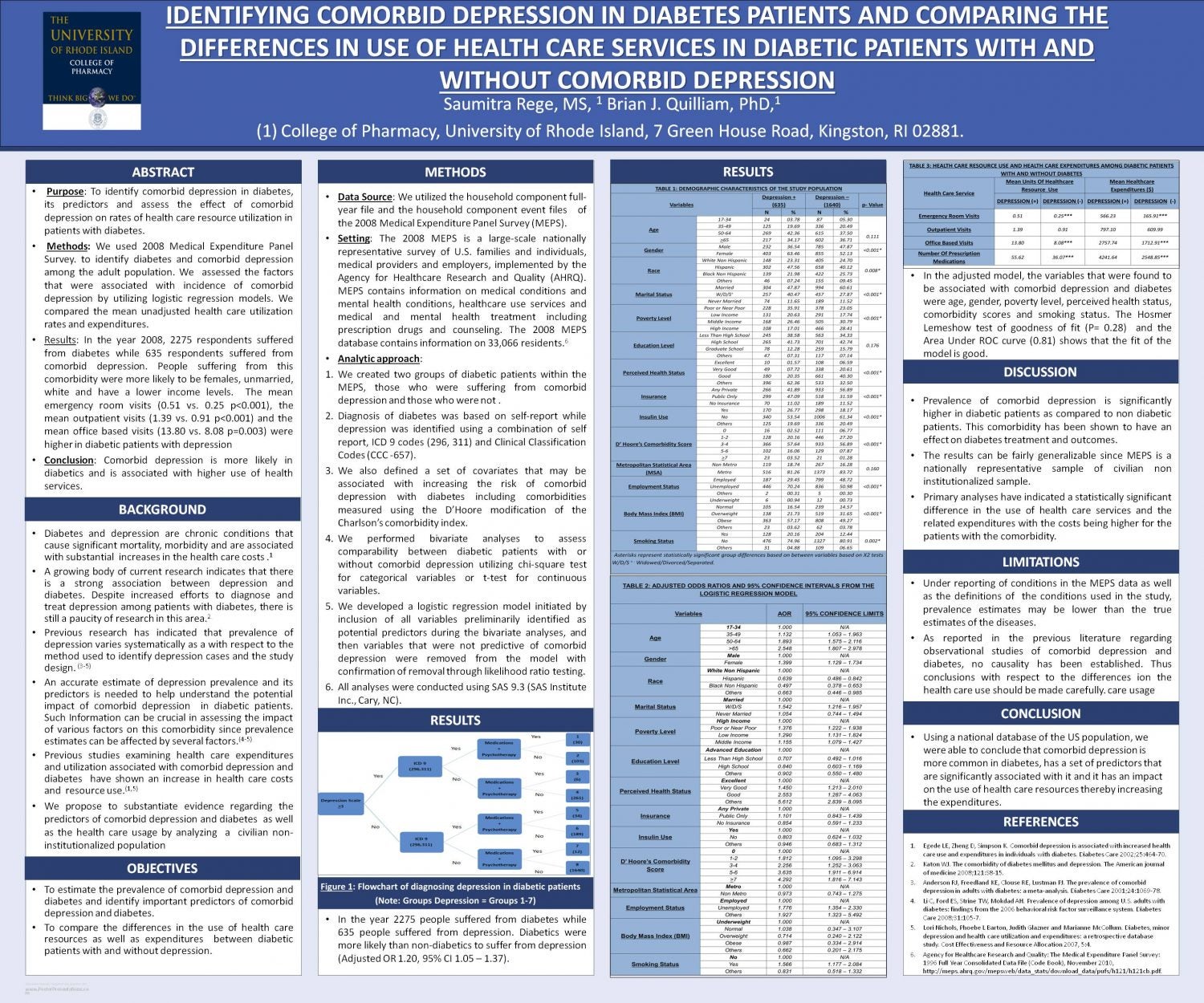- Presented at the ISPOR, May 2013
- Saumitra Rege, MS, 1 Brian J. Quilliam, PhD,1
Research
College of Pharmacy
12.00
Normal
0
false
false
false
EN-US
X-NONE
X-NONE
MicrosoftInternetExplorer4
/* Style Definitions */
table.MsoNormalTable
{mso-style-name:”Table Normal”;
mso-tstyle-rowband-size:0;
mso-tstyle-colband-size:0;
mso-style-noshow:yes;
mso-style-priority:99;
mso-style-qformat:yes;
mso-style-parent:””;
mso-padding-alt:0in 5.4pt 0in 5.4pt;
mso-para-margin-top:0in;
mso-para-margin-right:0in;
mso-para-margin-bottom:10.0pt;
mso-para-margin-left:0in;
line-height:115%;
mso-pagination:widow-orphan;
font-size:11.0pt;
font-family:”Calibri”,”sans-serif”;
mso-ascii-font-family:Calibri;
mso-ascii-theme-font:minor-latin;
mso-hansi-font-family:Calibri;
mso-hansi-theme-font:minor-latin;}
Purpose: To identify comorbid depression in diabetes, it’s predictors and assess the effect of comorbid depression on rates of health care resource utilization in patients with diabetes.
Methods: We used 2008 Medical Expenditure Panel Survey. to identify diabetes and comorbid depression among the adult population. We assessed the factors that were associated with incidence of comorbid depression by utilizing logistic regression models. We compared the mean unadjusted health care utilization rates and expenditures.
Related People: Brian Quilliam
(1) College of Pharmacy, University of Rhode Island, 7 Green House Road, Kingston, RI 02881.

